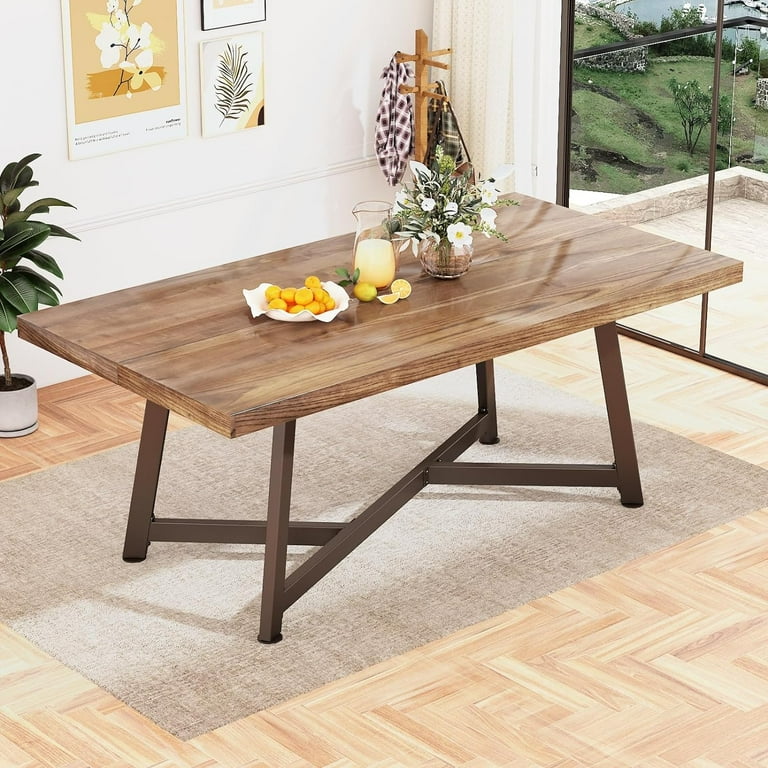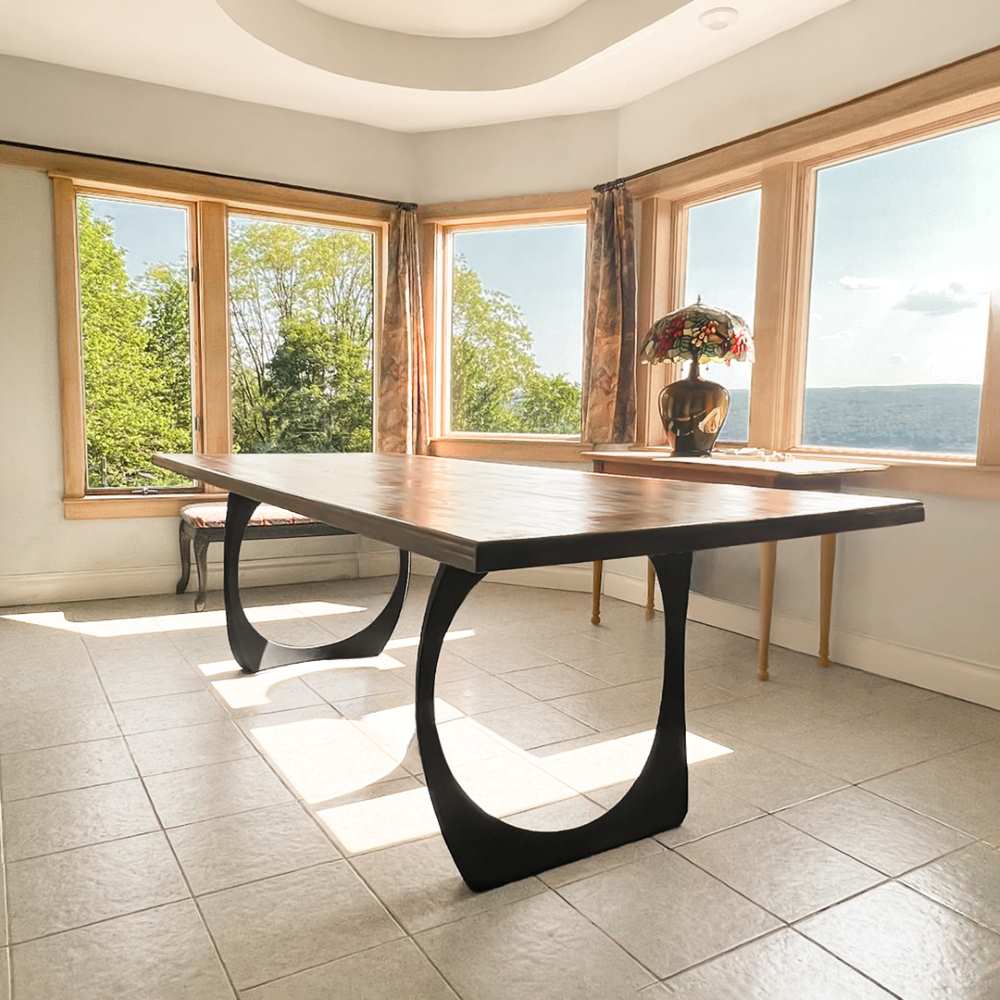Just How to Choose the Perfect Dining Area Table Legs for Your Home Décor
Selecting the suitable dining space table legs is a nuanced process that needs mindful consideration of different components, including your space restraints, aesthetic preferences, and useful requirements. The interaction in between products, measurements, and styles can significantly affect the atmosphere of your dining location, making it crucial to approach this choice systematically.
Assess Your Dining Room
Examining your dining space is crucial for picking the right table legs that match both appearances and capability. Begin by determining the dimensions of your eating area, including ceiling elevation, floor room, and distance to other furnishings. This info will certainly assist figure out the appropriate dimension and elevation of your table, which straight influences the selection of table legs.
Following, think about the design and layout of your dining area. An open-concept layout may benefit from table legs that supply visual lightness, such as slender steel or acrylic alternatives. Conversely, a much more typical setting might require tough wooden legs that offer a sense of durability.
Review the existing color combination and materials in your dining area. Harmonizing the table legs with these elements creates a cohesive appearance that boosts the total style.
Inevitably, a comprehensive assessment of your dining space will certainly lead you in making an informed choice, making certain that your table legs not just improve the visual appeal but additionally offer functional functions.
Consider Your Style Preferences
When choosing dining-room table legs, it is important to assess your individual style choices, as they substantially influence the overall visual of your dining space. Your selection of table legs can either enhance or contrast with existing décor, making it essential to straighten them with your recommended interior decoration style.
If your home leans towards a modern-day visual, consider streamlined metal or minimalist wood legs that offer a tidy, clean look. For a much more standard method, luxuriant wood legs with elaborate makings can include a touch of beauty and sophistication. Industrial designs take advantage of durable, raw products such as reclaimed timber and metal mixes, reflecting a rugged appeal.
Additionally, farmhouse and rustic designs often prefer durable, beefy legs that stimulate a sense of heat and comfort. On the other hand, if your decoration is diverse, you might select unusual shapes or a mix of products to create visual passion.

Evaluate Product Options
The choice of material for dining space table legs plays a crucial role in both sturdiness and visual allure. Usual products consist of wood, metal, and composite options, each offering unique attributes that can affect the total appearance and long life of your table.
Timber is a classic choice, known for its warmth and flexibility. Hardwoods like oak and walnut offer outstanding toughness and can be ended up in numerous discolorations to match any kind of design. Nonetheless, softwoods like want are more vulnerable to scratches and damages, making them less perfect for high-traffic locations.
Steel legs, often crafted from steel or light weight aluminum, exude modernity and commercial beauty. They are immune and highly durable to wear, making them suitable for families with kids or regular events (dining room table legs). Additionally, steel can be completed in various colors, boosting the modification opportunities
Composite materials, such as MDF or laminate, offer price and varied designs. While generally less durable than strong timber or metal, have a peek at this website they can still index supply a trendy appearance and are often simple to maintain.
Ultimately, the material you choose should straighten with your way of living, visual preferences, and the level of usage your table will experience.
Determine Height and Size
Picking the appropriate elevation and dimension for your dining room table is important for both functionality and comfort. The basic elevation for eating tables generally varies from 28 to 30 inches, allowing enough legroom for many people when seated. It is vital to think about the measurements of your dining area and the kinds of chairs you plan to utilize.

Moreover, take into consideration the proportions of your dining-room. A larger table in a large location can develop a grand setting, while a smaller sized table works well in more intimate settings. Ultimately, the right height and size will balance with your general design and improve the eating experience for you and your visitors.
Explore Modification Possibilities

Furthermore, the design of the legs can be customized to fit numerous designs, such as rustic, modern, or commercial. For circumstances, tapered legs can stimulate a mid-century contemporary feel, while beefy, block-style legs may resonate with find standard or farmhouse decoration.
Home owners can likewise explore shade surfaces, from all-natural wood discolorations to repaint, allowing them to match or contrast with the table top and surrounding style.
Additionally, leg height can be adapted to accommodate certain seating arrangements or individual choices, improving both convenience and functionality.
Last but not least, unique decorations, such as carvings or ornamental braces, can even more individualize the table legs, making the dining experience not simply a declaration yet a meal item in the home. By considering these modification options, home owners can create a dining-room table that genuinely mirrors their originality.
Conclusion
Choosing the ideal dining-room table legs requires cautious consideration of different factors, consisting of the measurements of the dining room, style choices, product durability, and desired height. Customization choices better improve the capability to accomplish a cohesive aesthetic that complements the total design. By methodically reviewing these elements, house owners can make certain that the picked table legs not just meet useful demands but additionally contribute favorably to the eating experience and ambiance of the home.
Choosing the excellent eating area table legs is a nuanced procedure that calls for mindful factor to consider of different aspects, including your area restrictions, aesthetic preferences, and useful needs.Assessing your dining room is crucial for selecting the right table legs that enhance both visual appeals and functionality.When determining dimension, gauge the location where the table will be placed to guarantee it fits pleasantly, permitting for at least 36 inches of clearance around the table for easy activity. A bigger table in a large area can develop a grand setting, while a smaller sized table works well in more intimate setups.Choosing the perfect dining area table legs needs careful factor to consider of different elements, including the measurements of the dining space, design preferences, material longevity, and preferred height.